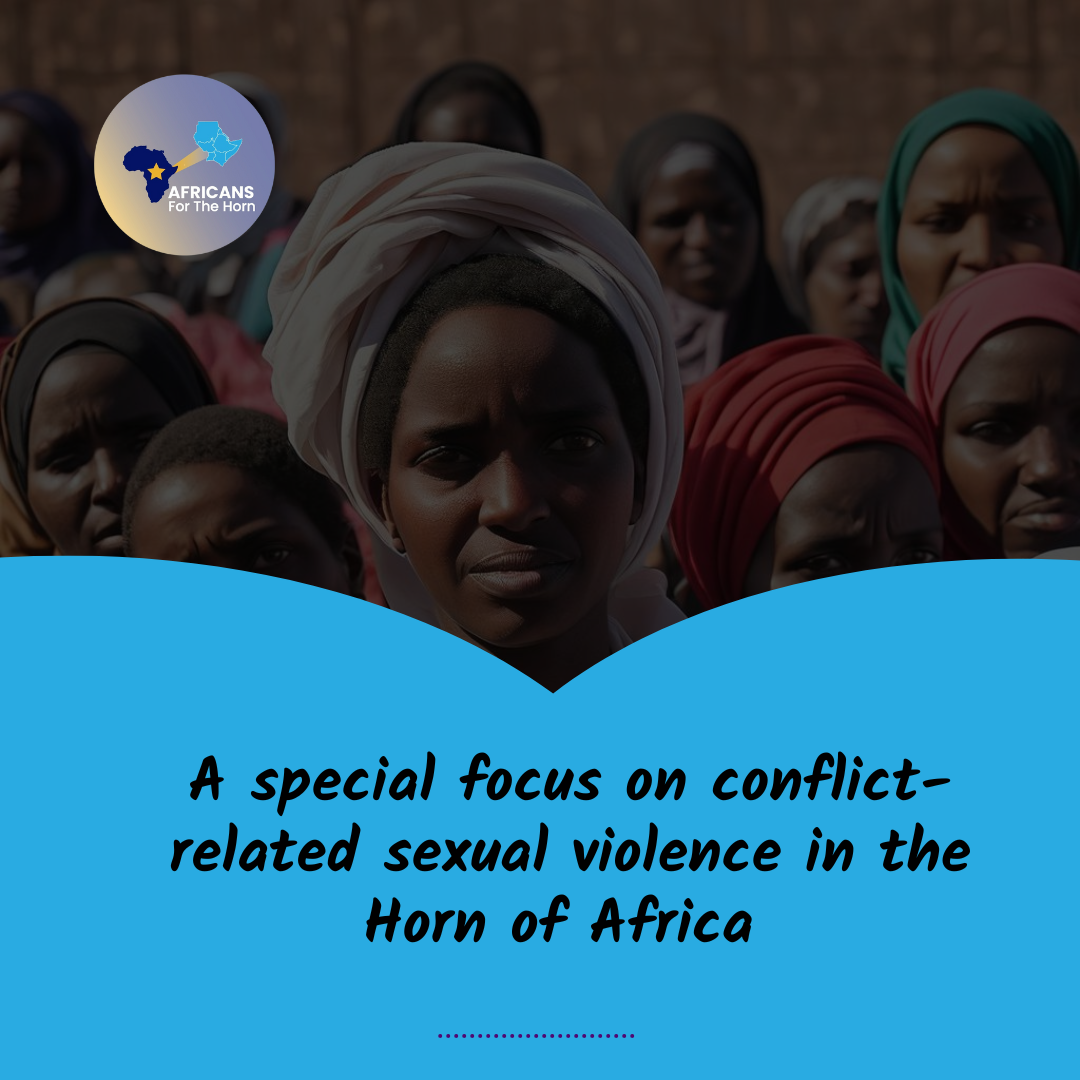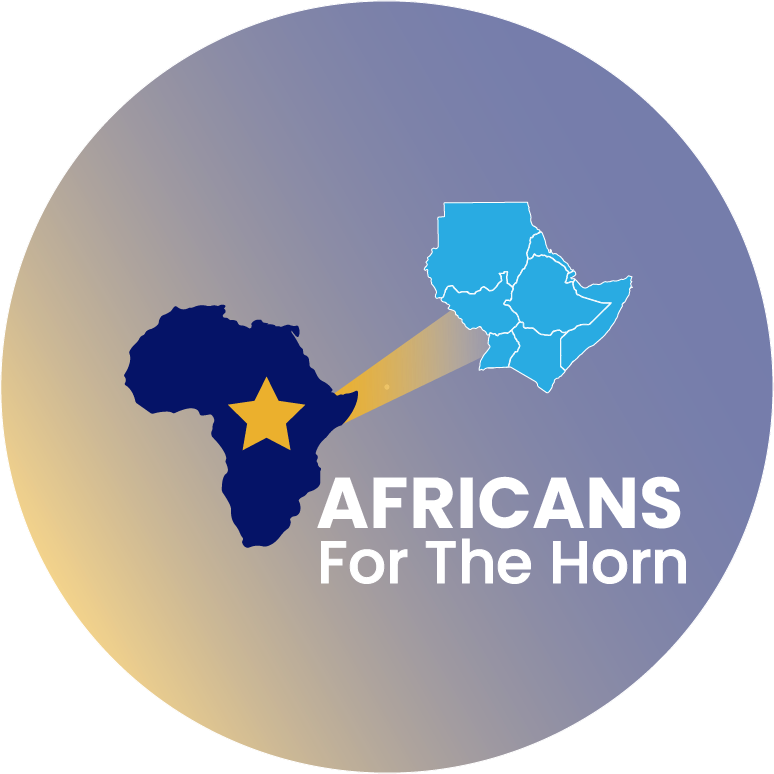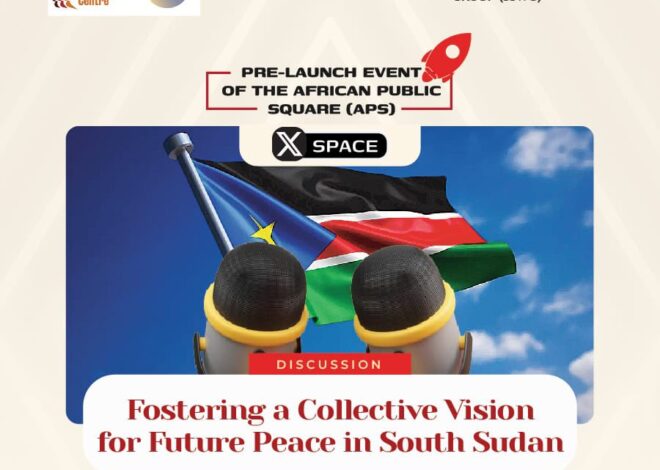
A Special Focus on Conflict-Related Sexual Violence in the Horn of Africa
As the world greeted International Women’s Day on 8 March, women affected by conflict in the Horn had little to celebrate. Violence against women and girls, prevalent worldwide, continues to be particularly acute in conflict settings across the region where war and instability exacerbate dynamics that enable the perpetration of sexual and gender-based violence (SGBV). While SGBV and conflict-related sexual violence (CRSV) are closely linked and sometimes used interchangeably, CRSV is a type of SGBV that occurs within the context of armed conflict and is perpetrated by state and non-state actors.
Women are disproportionately vulnerable to sexual violence, globally, one in three women will experience some form of SGBV in her lifetime and one in ten girls under the age of 20 has endured forced intercourse or other coerced sexual acts.
Conflict is increasing, and with it the risk of CRSV. According to the United Nations Secretary General’s report, there were more than 600 million women and girls living in conflict-affected areas in 2022, an increase of 50% over five years prior. The Horn of Africa is particularly affected by this surge in violence, and the ongoing situations in Sudan, South Sudan, and Ethiopia are characterised by high rates of CRSV. This special report highlights some of the key patterns of this violence. However, the true extent of these types of violations remains unclear as cases are widely underreported due to social stigma and lack of adequate support services for survivors, it is estimated that for every reported case another 10 to 20 go undocumented and unaddressed.
Sudan:
Since the outbreak of conflict between the Sudan Armed Forces (SAF) and Rapid Support Forces (RSF) on April 15, 2023, women and girls have borne the brunt of CRSV while preexisting types of SGBV, including Female Genital Mutilation (FGM), have increased. Women have been attacked while fleeing and searching for food and water. Credible sources have witnessed women and girls being transported in chains on pick-up trucks and cars. Despite documentation efforts, the figures reported are a vast underrepresentation of reality.
Sudan reported a surge in the number of individuals in need of GBV services with UNHCR estimating that 4.2 million were in need by October 2023. The number is expected to increase to 6.9 million this year.
Despite the difficulties of carrying out documentation amid the ongoing violence several reports are coming out, the Sudanese women’s advocacy group, “Together Against Rape and Sexual Violence,” documented 81 rape cases in five Sudanese states between mid-December 2023 and late February 2024, the United Nations High Commissioner for Human Rights (OCHA) reported at least 60 incidents, involving at least 120 victims across the country since the start of the war and the Strategic Network for Women in the Horn of Africa (SIHA) documented 117 cases between the period of 15 April and 31 December 2023.
The Together Against Rape and Sexual Violence report reveals a disturbing trend of violence against children. In nearly one-third of the recent documented rape cases, the victims were underage. The group documented 81 rape cases in five Sudanese states between mid-December 2023 and late February 2024. The OCHA report also highlights attacks on children. The UN Panel of Experts also reported that girls as young as 14 were raped by the RSF.
Among these 117 cases documented by SIHA, 25 were gang rapes. In 47 cases, the perpetrators were identified as RSF, additionally, 34 cases of abduction were reported to have been perpetrated by the RSF during that time.
After the RSF invaded Gezira State and the city of Wad Madani in December 2023, similar crimes were committed. Despite limited reports from Gezira, due to the lack of network connectivity and widespread fear of retaliation, SIHA reported that between 19 December 2023 to January 10, 2024, at least six women were sexually assaulted in Rufa’a Town by the RSF. In Wad Medani, RSF soldiers assaulted and robbed a mother, resulting in injuries, and caused the death of her three-month-pregnant daughter in the aftermath of an attempted rape. Doctors faced significant challenges in addressing the overwhelming number of cases.
Despite their vulnerability, Sudanese women rights defenders and activists have emerged as key drivers of change by actively leading the humanitarian response, contributing to building peace efforts and monitoring and documenting human rights abuses.
Somalia and Somaliland:
GBV remains prevalent in Somalia. According to Somalia Health and Demographic Survey (SHDS), over 60% of women face physical abuse, denial of education, forced marriage, rape and sexual harassment among other forms of domestic violence.
The 2024 Somalia Humanitarian Needs and Response Plan emphasised a rise in incidents of GBV, with female-headed households being especially susceptible. Somalia ranks tenth globally in terms of the prevalence of child marriage and has a female genital mutilation (FGM) prevalence of 99.2% among women aged 15–49. The UN documented a surge in gender-based violence from 2022 onwards.
In Hargeisa and Mogadishu, three men murdered their wives, two with knives and one by setting her on fire. In the Afgooye district, local residents and security forces intervened to prevent a man armed with petrol and matches from setting his wife and children ablaze. The incidents sparked femicide protests in Somalia. On 7 February 2024, a coalition of women’s rights organisations, activists, and human rights defenders in Somalia expressed serious concern regarding the alarming surge in femicides.
Some argue that the targeting of women and girls constitutes a mass atrocity crime. The prevailing culture of impunity and the inadequate regulatory framework within Somalia, along with deep-rooted gender disparities, create ideal conditions for these atrocities.
As in Sudan, many reported cases involve youth. Between January and October 2023, 265 cases of sexual violence against children were documented, 209 girls and 56 boys. The majority of the crimes were committed by armed men.
Somalia has not yet adopted any laws to enhance the legal framework for prosecuting conflict-related sexual violence. In 2022, UN Women ranked Somalia as the sixth-most gender-unequal country in the world. This ranking underscores the patriarchal nature of Somali society, which perpetuates strict gender roles and disadvantages women and girls.
South Sudan:
South Sudan has experienced significant levels of sexual violence, particularly in the context of its long-standing civil conflict and instability. 65% of South Sudanese women have experienced sexual or physical violence, according to the International Rescue Committe.
The UN Human Rights Commission’s report to the Human Rights Council on South Sudan, reveals that as the country gears up for its initial elections in December 2024, the government has failed to achieve crucial milestones outlined in the 2018 peace agreement for promoting accountability, including for SGBV.
There report also reveals an increase in abductions of women and children in Jonglei state and the Greater Pibor Administrative area, often involving disturbing cases of sexual violence and the cruel separation of parents from their children. These abductions are part of a broader pattern of commodification in which they can be trafficked or traded for cattle or money.
The commissioners also interviewed survivors of sexual violence in Bentiu, where a densely populated camp shelters approximately 100,000 people displaced by violence and flooding. There they documented incidents of rape in 2023 by both the South Sudan People’s Defence Forces (SSPDF) and Sudan People’s Liberation Movement/Army-in-Opposition (SPLM/A-IO). Often, the victim was outside the camp gathering firewood, burning charcoal, or searching for food to supplement their income and dwindling food assistance.
The ongoing brutal sexual violence and gender-based violence crimes are exacerbated by the lack of security and protection measures for women and girls, coupled with their exclusion from national agenda-setting processes. This has had devastating effects on the lives of both individuals and their families
Ethiopia:
Ethiopia continues to grapple with the aftermath of the Tigray conflict, where thousands of women suffered sexual and physical violence. According to the International Commission of Human Rights Experts on Ethiopia (ICHREE) the violence left at least 10,000 people,predominantly women and girls, survivors of sexual violence in Tigray alone, between November 2020 and June 2023. Similarly, Amnesty International documented160 cases over a similar period. Incidents took place in civilian residences and the Eritrean Defence Forces (EDF) military camps. A medical expert told the organisation that their centre received 2250 cases of CRSV between November 2020 and June 2023, with 76 cases occurring in just one week in June 2023. A report by Physicians of Human Rights (PHR) and the Organisation of Justice and Accountability in the Horn of Africa (OJAH) revealed similar patterns by reviewing medical records, the majority of the survivors were adults with 33% aged between 18-25 and 7% were minors.
Many survivors of CRSV remain internally displaced and unable to go back home due to ongoing insecurity. Despite the signing of the Cessation of Hostilities Agreement (CoHA) in November 2022, Eritrean soldiers continue to subject women to horrific abuse including rape, gang rape and sexual enslavement.
Unfortunately, CRSV is not limited to Tigray. Numerous cases of gender-based violence have been reported in IDP camps in the Oromia region. Assistance for survivors is inadequate as pregnant rape victims were either forced to deliver in extremely precarious conditions, while others opted to terminate their pregnancies due to associated health risks. Survivors urgently need access to emergency medical care, including treatment for sexually transmitted diseases, emergency contraception, and mental health support.
Responses:
In response to this ongoing crisis of violence, it is important to note that women in the region are organising to protect themselves and support each other. Examples include the women’s protests against violence in Somalia and the frontline role of women’s organisations in responding to survivors in Sudan. Women’s organisations such as the Strategic Initiative for Women in the Horn of Africa have been critical in documenting the scale of the abuses.
More needs to be done, however, to prioritise women’s needs in crisis response. Some organisations, such as the United Nations Development Programme (UNDP), are supporting economic empowerment, poverty alleviation and prevention. There are also efforts to ensure access to essential services, such as physical and mental health. The Government of Japan contributed over one million USD to UN WOMEN Sudan to address the urgent needs of hundreds of thousands of IDPs women and girls impacted by the ongoing Sudan crisis. UNFPA has worked to create a “one-stop centre” in Ethiopia, a facility that offers a variety of support to survivors in a single location to ensure access and prevent retraumatization coming from women having to tell and retell their stories. There is also a need for greater support to local organisations within these responses.
In addition, there is a strong need to ensure accountability for past crimes as a way of preventing future atrocities. In one recent new mechanisms for pursuing this, in June 2023, the United States Department of the Treasury’s Office of Foreign Assets Control (OFAC) sanctioned two South Sudanese individuals for having engaged directly or indirectly in conflict-related sexual violence (CRSV). This was the first time that sanctions were explicitly framed in response to CRSV. Although the effectiveness of these sanctions remains to be seen, it is a signal that accountability for CRSV is being taken more seriously that they were focused in this way.
Despite these efforts, however, the continued prevalence of CRSV shows clearly that much more remains to be done.
Read the original article at Atrocities Watch Africa



